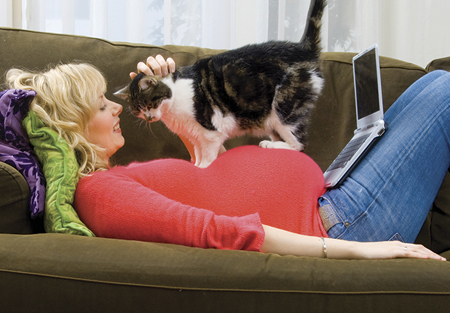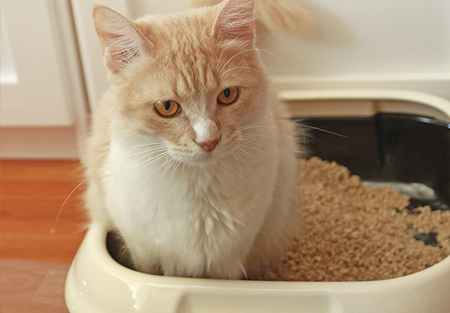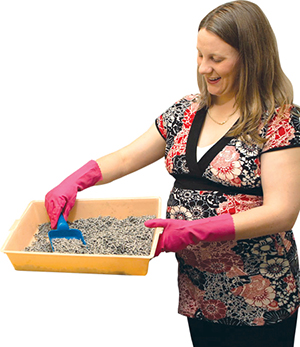Zoonoses – diseases that pass from animals to humans
There are a range of diseases which our pets can pass onto humans. These can also be referred to as zoonoses. Worms, ringworm and toxoplasmosis, in particular, relate to our children, pet dogs and cats. Good hygiene practices, regular worming and flea treatment and keeping your environment free of cat and dog faeces will go a long way to minimising the risk of these and other diseases being passed on.On this page
What are zoonoses
Diseases passed to the unborn baby
Diseases pets may pass to children
What are zoonoses
Zoonoses are a range of diseases animals can give to humans. Worms, ringworm and toxoplasmosis are diseases that dogs and cats can give to your child. To minimise the risk of transferring these and other diseases, always:- keep good hygiene practices
- regularly worm your pet
- regularly treat your pet for fleas
- keep your environment free of cat and dog faeces.

Diseases passed to the unborn baby
Toxoplasmosis
What is it toxoplasmosis? Toxoplasmosis is an infection with a parasite called Toxoplasma gondii. It infects warm blooded animals including humans and usually with no symptoms. Many people have been in contact with this parasite already and built up immunity. Toxoplasmosis is rare, but it can cause serious disease in unborn babies. Pregnant women can follow simple precautions to minimise the risk of infection. How do you get toxoplasmosis? You can get toxoplasmosis by:- eating contaminated raw or partly cooked meat
- using contaminated food utensils that have been in contact with raw meat
- contact with infected cat faeces
- consuming contaminated drinking water.
 How to avoid toxoplasmosis?
How to avoid toxoplasmosis? Cat faeces You can come into contact with cat faeces through the litter tray or soil in the garden. To avoid contamination from cat faeces, avoid hand to mouth contact. Make sure litter trays are thoroughly cleaned and disinfected at least daily. It takes about 24 hours for the infected faeces to become contagious. Leave the cleaning of the trays to your partner and make sure they practise good hygiene. No contact means minimised risk.
 To clean the litter:
To clean the litter:
- Carefully pour litter into a plastic bag, tie it up and place into the bin.
- Wash the tray with very hot water and detergent.
- If there’s no one else to clean the trays, always use rubber gloves.
- Wear gloves if you will be touching any soil or sand.
- Always wash your hands thoroughly after gardening, cleaning trays and touching your cat.
- Always wash your hands thoroughly before preparing food.
- Thoroughly wash all utensils and kitchen equipment that has touched uncooked foods.
- Wash all fruit and vegetables thoroughly before cooking and eating.
- Avoid touching or eating raw or under cooked meats (or use disposable gloves).
- Cook all meats through to an internal temperature of 160 degrees.
- Fluids from cooked meat should be clear.
Diseases pets may pass to children
Roundworm
What is roundworm? Pets often have large parasitic worms living in their intestine called roundworm. Humans can be infected by accidentally consuming the eggs which are passed in the faeces. Children are more at risk because they play in backyards and sand pits which can be contaminated with dog and cat faeces. The eggs hatch in the digestive tract and the larvae migrate to various organs. How can you prevent it?- Worm all dogs and cats in the house regularly.
- Don’t allow your pets to lick your child’s face.
- Always wash your child’s hands after handling your pet.
- Avoid hands in mouths until after the hands are washed.
- Dispose of pet’s faeces as soon as possible.
- Cover sand pits to prevent contamination by cats and dogs.
- bloated belly
- blood or mucus in faeces
- diarrhoea
- loss of appetite
- vomiting.
- abdominal pain
- poor or ravenous appetite
- upset stomach
- diarrhoea.
Ringworm
What is ringworm? Ringworm is actually not a worm but a fungal infection of the skin. It can spread from direct contact or from things like:- infected bedding
- carpet
- furniture
- air conditioning
- heating ducts.
- Thoroughly wash hands after handling pets or playing in the garden.
- Avoid direct contact with infected animals.
Cat scratch disease
What is cat scratch disease? Cat scratch disease is caused by Bartonella henselae bacteria, which is passed between cats by fleas and possibly ticks. It is more common in kittens but they usually only carry the bacteria for a limited time. The disease is passed to humans through:- a cat scratch
- a cat bite
- exposure to cat saliva.
- Avoid rough play or activities that lead the cat to scratch or bite.
- Don’t let cats lick your child’s open wounds or scratches.
- Thoroughly wash all cat bites and scratches with soap and running water.
- Treat your cats regularly with a quality flea treatment.
- slight fever
- headaches
- chills
- backache.